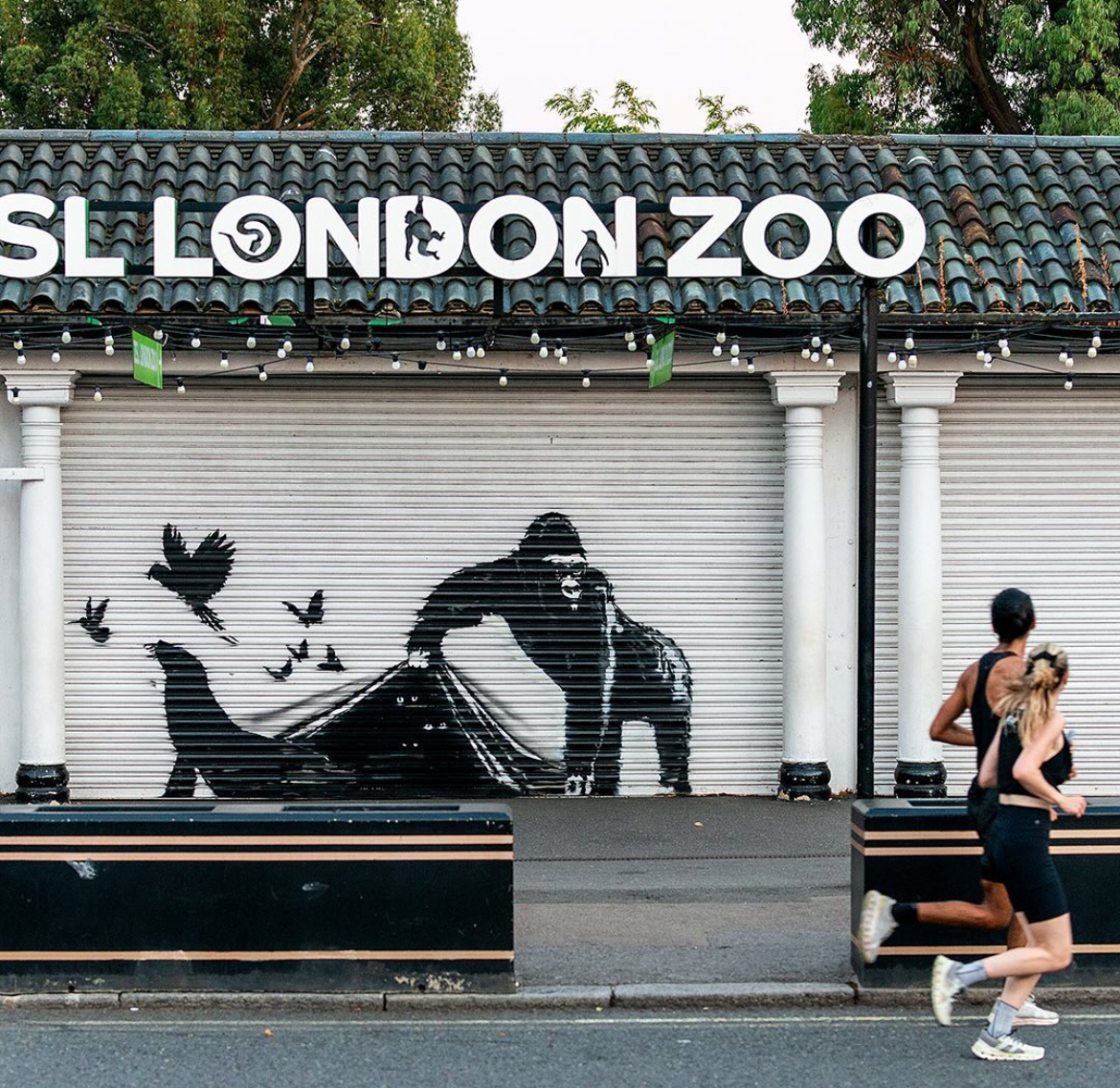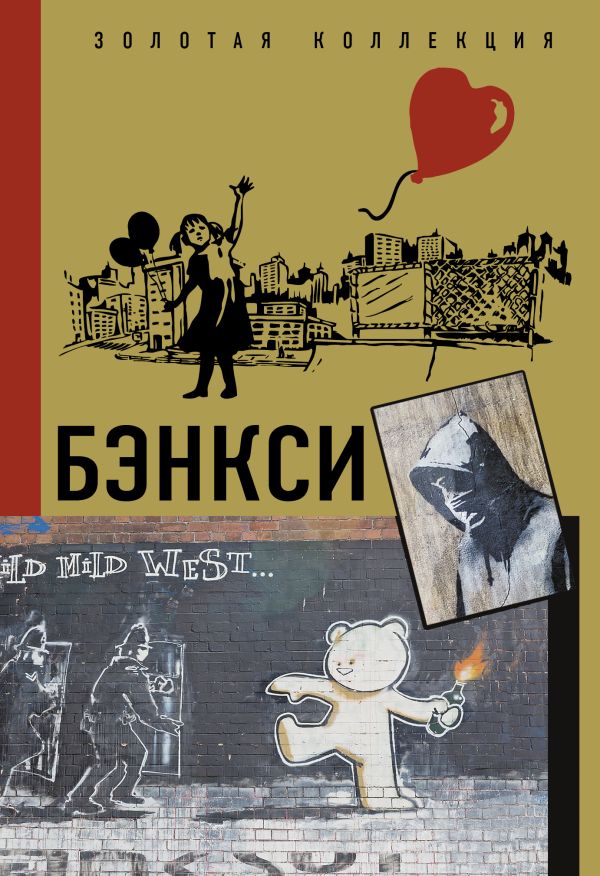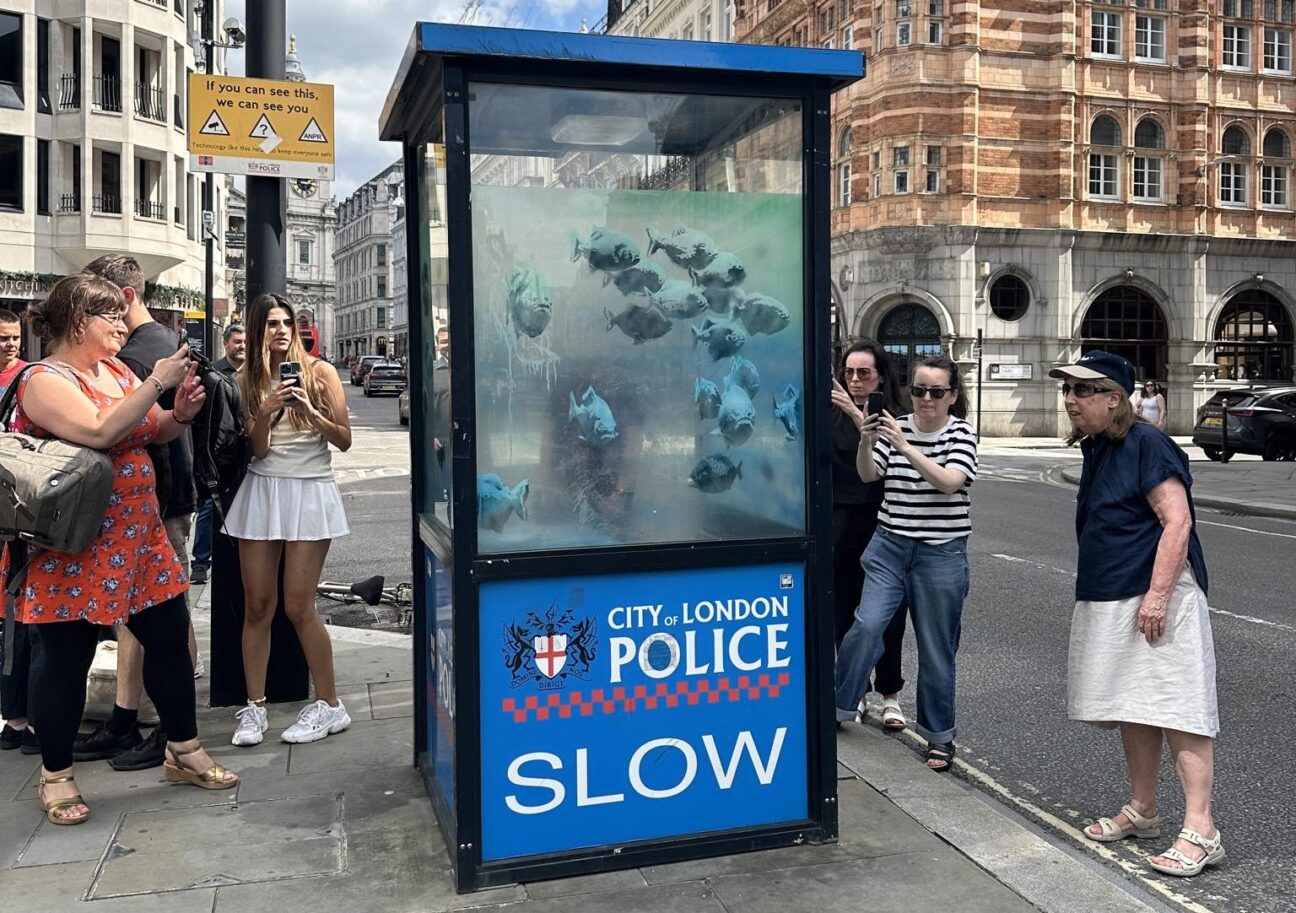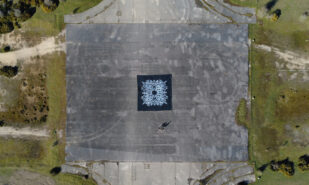In the enigmatic world of street art, few figures provoke as much speculation as Banksy. The elusive artist, known for his sharp social commentary and iconic stencil works, has once again made London the stage for his creativity.
“London Zoo” by Banksy

Over the course of one week, nine new Banksy pieces appeared across the city, each depicting a clear silhouette of an animal: a mountain goat standing on a narrow wall near Kew Bridge, two elephants gently reaching out to each other from boarded-up windows of a house in Chelsea, three monkeys jumping around Brick Lane, a wolf howling at a satellite dish in Peckham, two pelicans feasting on fish on a wall in Walthamstow, and more.
These latest works, whose authenticity was confirmed by the artist himself on his Instagram page, have sparked a storm of interpretations and debates. But unlike his usual practice, this time Banksy offered no explanations or captions to guide the public’s understanding. Instead, he left it up to the viewers to speculate on the meaning of these minimalist silhouette images, adding further mystery.
We reached out to curator and art historian Masha Berezanskaya, author of a book on Banksy, to shed some light on the works:
“This story is very reminiscent of what he [Banksy] did many years ago in New York. The project was called “Inside Out”: for a month, the artist released a new piece in the city every day. Every morning, a description and photo of the ‘work of the day’ would appear on Banksy’s website. Using clues, New Yorkers had to find the piece. Tourists and residents would drop their plans and rush to see the street art.
For a whole month, Banksy turned New York into a giant art quest. Thanks to Banksy, the pampered residents of Manhattan ventured into the most disadvantaged areas of New York, where they would never have gone under any other circumstances. But the urge to see Banksy was so strong that, casting aside prejudices, people headed into the alleys of Queens and the Bronx. Banksy made an entire city play by his rules!
Back then, he used not only paintings but also performances and installations. Both then and now, these projects are series of works united by a common idea. In New York, the overarching idea was to create a kind of citywide quest, because Banksy had created a project website in advance and alerted people to new works.
I’ve already written about this in my book. This is how Banksy tries to link his works not just to a place, but to the entire city—this is his way of interacting with city dwellers. Here in London, perhaps everything will be revealed only at the end, and we are all eagerly watching to see how the project will conclude.”

Social media quickly dubbed the collection the “London Zoo.” Many saw the works as a reference to the ongoing conflict in Gaza, the deepening climate crisis, or even the unsettled nature of life in the age of social media. Others connected the works to recent political and social issues, suggesting that the animals represent far-right protesters and serve as commentary on the wild nature of political extremism.
Masha disagrees: “Some say these works are a response to far-right protests, but the protests are a very recent story. I think the project was planned long ago. Of course, I can’t speak for Banksy, but usually, such preparations take time. However, the social message cannot be denied.”
Paul Gough, Vice-Chancellor of Arts University Bournemouth, believes that the use of animals is far from arbitrary. “Banksy has often used animals to convey urgent information about environmental issues, habitat threats, and the impact of climate change,” he says. “But they are also powerful metaphors for the state of global politics and the troubled world we’ve created.” According to Gough, as the artist creates a zoo—a bestiary of animals—it will “continuously draw attention and raise the stakes.” “This is Banksy marketing at its best and most impressive, creating an atmosphere of enormous anticipation,” Gough explains.
However, anticipation also breeds skepticism. Jonathan Jones, an art critic from “The Guardian”, argues that the new works signal troubling changes in Banksy’s creativity. “He has become a national treasure, and that’s not the best image for a street artist,” notes Jones, calling the animal silhouettes “tasteless” and believing they lack the provocation that once defined Banksy’s work. “He creates images to talk about, not art to think about. He is the enemy of sensitivity, the revenge of the philistine, an artist for people too lazy and narcissistic to open themselves to real art,” Jonathan Jones claims.
For Banksy, who has spent decades straddling the line between underground provocateur and mainstream success, this criticism may be both inevitable and necessary. As his works fetch record sums at auctions (for example, “Love is in the Bin” sold for £18.6 million), Banksy increasingly finds himself at odds with the very establishment he once sought to undermine. The theft of the “Peckham Wolf” piece just hours after it appeared (three men in balaclavas removed a stranger’s satellite dish featuring the image) only underscores the commercialisation of the artist’s work.
Speculation is already rife: Banksy may have one last trick up his sleeve—a grand finale that will tie together the disparate elements of the series. Gough hints at the possibility of a video release—a tactic the artist has used in the past. Whether this series will be remembered as a bold new chapter in Banksy’s career or as a sign of artistic complacency remains to be seen. For now, the murals remain as enigmatic as their creator.





